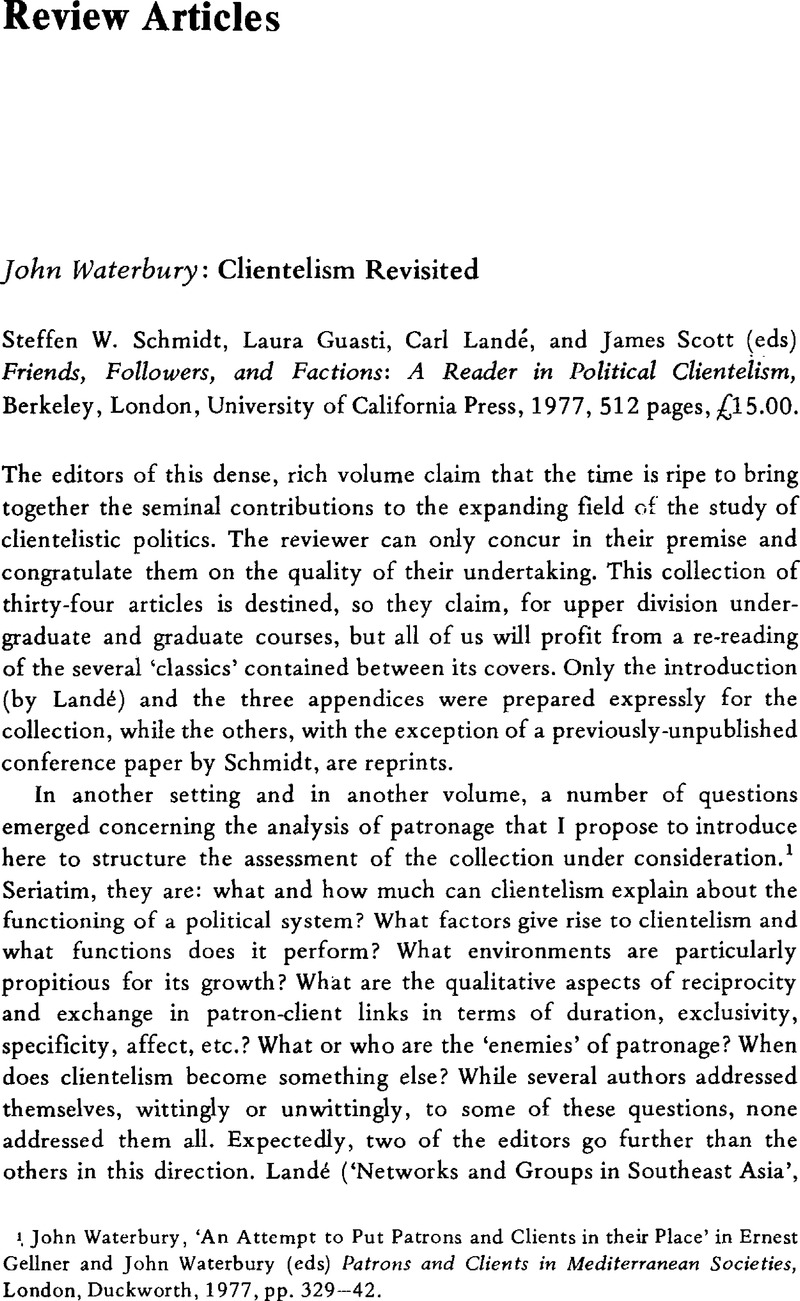No CrossRef data available.

1 Waterbury, John, ‘An Attempt to Put Patrons and Clients in their Place’ in Gellner, Ernest and Waterbury, John (eds) Patrons and Clients in Mediterranean Societies, London, Duckworth, 1977, pp. 329–42.Google Scholar
2 Silverman, Sydel, ‘Patronage as Myth’, ibid., p. 18.Google Scholar
3 Gilsenan, Michael, ‘Against Patronclient Relations’, ibid., p. 168.Google Scholar
4 Wertheim on Java and Gould on the Hindu jajmani system naturally link the origins of patronage in their societies to the existence of aristocratic orders.
5 Davis, John, People of the Mediterranean: an Essay in Comparative Sociology, London, Routledge & Kegan Paul, 1977, p. 150.Google Scholar
6 Waterbury, op cit.
7 Khalaf, Samir, ‘Changing Forms of Political Patronage in Lebanon’ in Gellner and Waterbury, op: cit., p. 198.Google Scholar
8 Peters, Emrys, ‘Patronage in Cyrenaica’, ibid., pp. 275–;90.Google Scholar
9 Palombara, J., Interest Groups in Italian Politics, Princeton University Press, 1964 CrossRefGoogle Scholar, esp. chapters 8 & 9. It is again Islam that legislates group clientelism through the designation of protected communities.
10 See also Boissevain, Jeremy, ‘When the Saints Go Marching Out: Reflections on the Decline of Patronage in Malta’, in Gellner and Waterbury, op. cit., pp. 81–96.Google Scholar
11 Moore, Clement, ‘Clientelist Ideology and Political Change: Fictitious Networks in Tunisia and Egypt’, ibid., pp. 255–74.Google Scholar